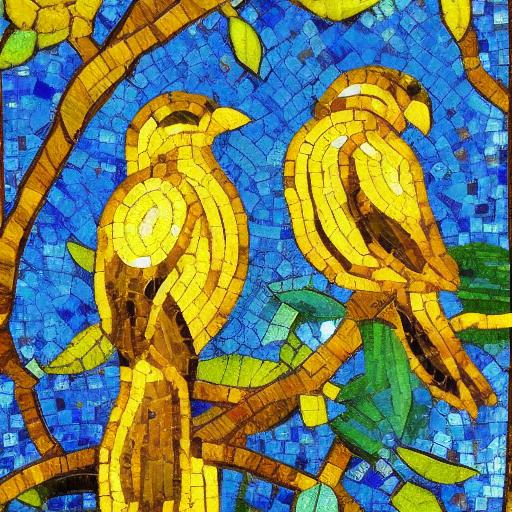Mosaic illustration
Mosaic illustration is a form of art that uses small pieces of materials, such as glass, stone, or tile, to create a larger image or design. This technique has been used for centuries in various cultures around the world to decorate buildings, furniture, and even clothing. In a mosaic illustration, the individual pieces, called tesserae, are arranged to form a pattern or image. The tesserae can vary in size, shape, and color, allowing for a wide range of creative possibilities.
Digital art
In modern times, mosaic illustration has also been adapted to digital art, with the use of computer software to create pixelated or tiled images. This technique allows for greater precision and flexibility in the design process, as well as the ability to manipulate and edit the image more easily than with traditional mosaic techniques. Additionally, digital mosaic illustration can be used in a variety of media, such as websites, print, and even video games.
Mosaic illustration has been used in a wide range of applications, from decorative art to functional design elements. It can be seen in various forms of architecture, such as floors, walls, and ceilings, as well as in artwork such as paintings and murals. With the rise of digital technology, mosaic illustration has become more accessible and can be used in a variety of creative projects.
AI-generated art
AI-generated art is a form of artwork that is created with the use of artificial intelligence algorithms, which enable fast and efficient production of images. This technique offers numerous benefits over traditional art-making methods, including the ability to experiment with different styles and techniques, and the flexibility to create designs that meet specific requirements. Moreover, AI-generated art promotes inclusivity and diversity in the art world by providing a platform for artists from various backgrounds to express their unique experiences and perspectives.
Designers can easily integrate AI-generated art into their projects by utilizing online tools such as Visual Paradigm Online. Furthermore, artists can create their own AI-generated art by using websites like Stable Diffusion, Midjourney, or Dalle 2, which provide a platform to explore the virtually endless creative possibilities of this technology. By incorporating AI-generated art into their work, designers and artists can produce unique and innovative pieces that push the boundaries of traditional art and design.
How to create this prompt?
The first part of the prompt is “mosaic of two birds sitting on top of a tree branch.” This specifies the subject matter of the image, which is a mosaic representation of two birds sitting on a tree branch. The use of the word “mosaic” suggests that the birds will be made up of smaller pieces of glass or other materials. Additionally, the use of “two birds” and “tree branch” indicates the composition and placement of the birds within the image.
The second part of the prompt is “a mosaic inspired by Louis Comfort Tiffany.” This indicates the style of the mosaic and the inspiration behind it. Louis Comfort Tiffany was a prominent designer in the Art Nouveau movement and known for his glass work, so the mosaic is likely to have a similar aesthetic.
The third part of the prompt is “pixabay” which is a source for the AI to gather images from. This can help to inform the colors, textures, and overall look of the image.
The fourth part of the prompt is “art nouveau, blue and yellow fauna, birds, glass mosaic.” This provides additional details about the style and color scheme of the image. Art Nouveau is characterized by its use of flowing lines and natural forms, so the AI system is likely to incorporate these elements into the mosaic.
In summary, to write an AI image prompt like the one above, you need to specify the subject matter, style, inspiration, source images, and other details to guide the AI system’s image generation process. By carefully selecting each individual part of the prompt, you can influence the resulting image’s composition, style, colors, and overall aesthetic.


